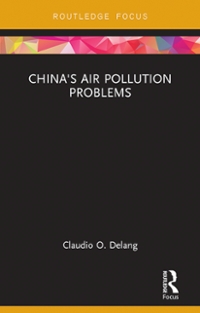Please solve
5. Answer all parts (a)-(e) of this question. Consider the following production function: Q = 3K 1 3L 1 3, with marginal products given by MPL = K 1 3 L 2 3 and MPK = L 13 K 2 3. Define the unit prices of L and K as w and r, respectively. Finally, assume that the firm takes the price of its product, p, as given and maximizes profits. (a) [4 marks] Imagine capital is fixed at KO = 1 in the short run. What is the short-run cost function of the firm? Explain briefly. (b) [7 marks] What is the long-run cost function of the firm? (c) [3 marks] What is the long-run supply function of the firm? (d) [6 marks] What is the profit function of the firm? (el [5 marks] Now suppose that set-up costs are f1. What is the shut down rule of the firm when r = w = 1?A firm's production function is given by Q = KL. The marginal products of labor and capital are, respectively, MPL = K and MPK = L. The wage rate of labor is w = $10 and the rental rate of capital is r = $20. What is the most efficient combination of labor and capital (L, K) that also yields a cost of exactly $1000?Question 1. The weights of college football players follows a normal distribution with mean 225 pounds and standard deviation 23 pounds. A random sample of 25 college football players is taken and the sample mean (Ybar) is computed. Calculate the following. (a) mean of Ybar (b) standard deviation of Ybar (c) probability that Ybar will be greater than 235 pounds (d) probability that the weight of a single randomly selected college football player is greater than 235 pounds4) Consider the following production function q = f (k, l) = kl where k is capital and I is labor used. Both inputs are variable. Rental rate of capital is given by r and wage rate of labor if given by w. a) Find Conditional (Factor) Demand for k and ] b) Find the Cost function for this firm in terms of q,w and r only. c) Find an expression for Marginal Cost (MC) and Average Total Cost (ATC) IT d) What is the total cost if this firm produces 10 units of output if rental rate is $1 and wage rate is $2? What is the fixed cost? What is the Variable cost? e) Find Marginal Cost and Average Total Cost at 10 units of output if rental rate is $1 and wage rate is $2. f) Is this firm experiencing Economies of Scale or Diseconomies of Scale at the output of 10 units?1. A firm has the following Cobb-Douglas production function: q = 2L2/3K1/3 a. Suppose K = 27 in the short run. Solve for the short run production function. b. If w is the price of labor (i.e. the wage rate) and r is the rental rate of capital, solve for the firm's short run cost function (i.e. express short run total costs as a function of w, r and q). c. What is the short run marginal cost of an additional unit of q? Is it increasing, decreasing, or constant? d. Let us now consider the firm's decision making in the long run. What is the leastcost combination of L and K the firm should employ to produce 60 units of output when the wage rate is 4 and the rental rate of capital is 2? e. More generally, suppose the firm wants to determine the cost minimizing combination of L and K for any given values of q, w, and r. Solve for the firm's factor demand functions for L and K (i.e. express the optimal quantity of L and K in terms of war and g). f. Using these factor demand functions, solve for the firm's long run cost function. g. Apply Shephard's Lemma to re-derive the firm's factor demand function for K h. What is the long run marginal cost of each1. Consider the simple regression model: yi = Bo + Bir, + th, for i = 1, . . . .n, with E(ur,) / 0 and let z be a dummy instrumental variable for r, such that we can write: Ti = To + matu, with E(u,|z,) = 0 and E(vilzi) = 0. (c) Denote by no, the number of observations for which z, = 0 and by n, the number of observations for which 2, = 1. Show that: [( - 2) = =(n-m). and that where yo and y, are the sample means of y for = equal to ( and 1 respectively Hint. Use the fact that n - n + no, and that = = my). Now we regress of on r to obtain an estimator of ,- From the standard formula of the slope estimator for an OLS regression and using the result in (els show that This estimator is called the Wald estimator












